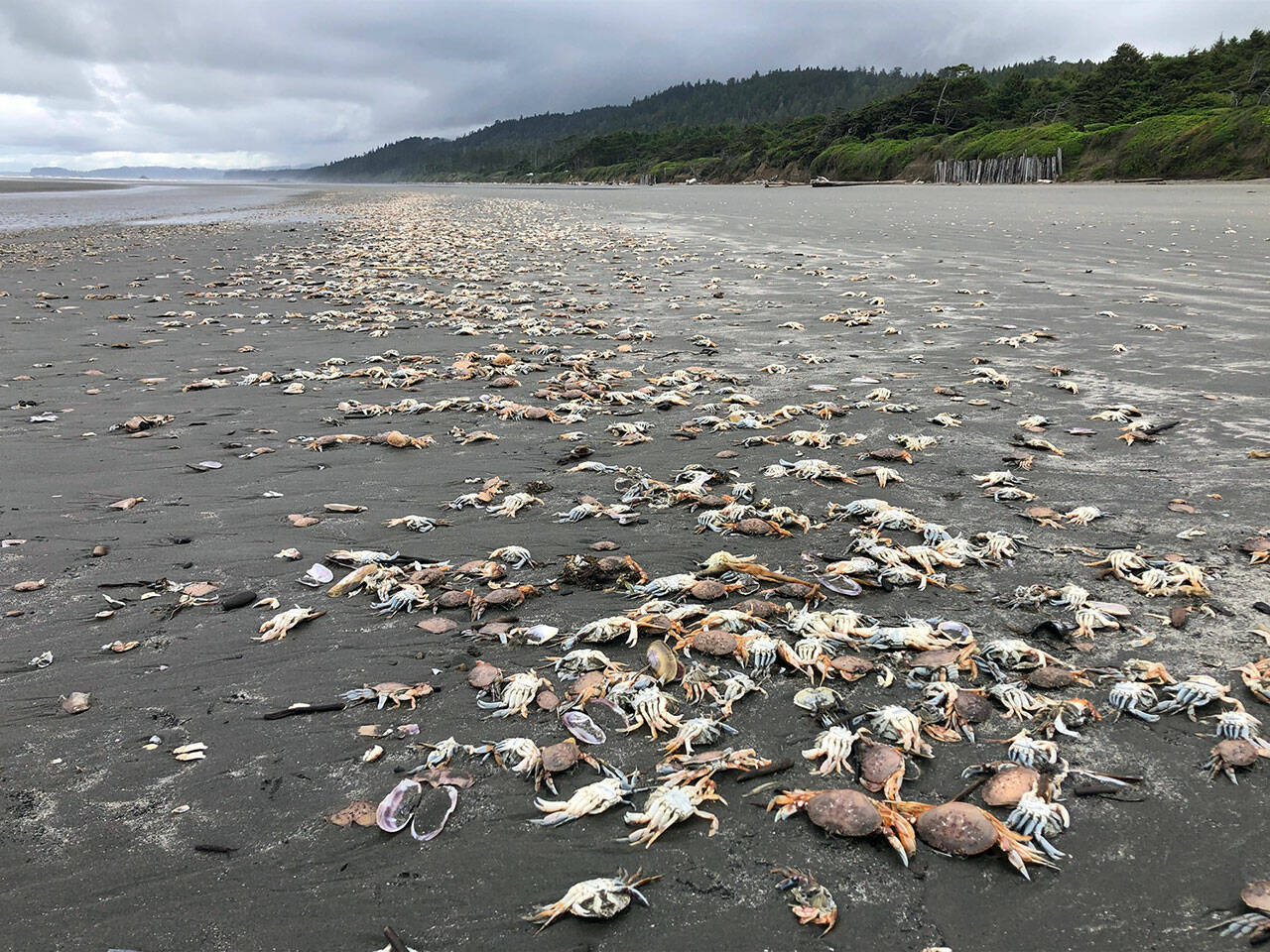Dangerously low oxygen levels are killing Dungeness crabs off the Pacific Coast and the National Oceanographic and Atmospheric Administration is awarding $4.2 million over the next four years to research how ocean environments are changing.
On Wednesday, the agency announced it had awarded $967,505 to Oregon State University, the first payment in what is to be a four-year collaborative project conducted in California, Oregon and Washington and including the Olympic Coast National Marine Sanctuary.
“Ocean acidification, hypoxia, increasing temperatures and harmful algal blooms have emerged as leading environmental stressors in the Northern California Current Ecosystem,” NOAA said.
“For the Dungeness crab fishery, the U.S. West Coast’s most valuable fishery, hypoxia has resulted in mass mortality of crabs in commercial pots, and HAB events have led to substantial fishing curtailment including season-scale closures.”
NOAA estimates a toxic algae bloom off the West Coast in 2015 cost roughly $97.5 million in lost revenue from the Dungeness crab fishery and $40 million in the tourism industry.
Red and snow crab fisheries in Alaska were closed last month due to drastically declining crab populations, The Associated Press reported.
The goal of the program is to help prepare for the impacts of climate change by creating projections about future ocean conditions and how marine life will react to the various stressors impacting their environment.
The program will bring together a number of institutions to combine existing data, revise oceanographic models and conduct field and lab studies on Dungeness crab and krill.
Oregon State will redistribute the funds among more than 18 collaborating scientists at nine institutions, according to Kimberly Puglise, spokesperson for NOAA.
In addition to Oregon State and the Olympic Coast National Marine Sanctuary, institutions involved include the University of Washington, the Northwest Association of Networked Ocean Observing Systems, the University of Connecticut, the University of California Santa Barbara and NOAA’s Pacific Marine Environmental Laboratory, the Northwest Fisheries Science Center and National Centers for Coastal Ocean Science.
“It really is a powerful opportunity to synthesize this data to understand better the spatial factors,” said Jenny Waddell, a Port Angeles-based research ecologist with NOAA Olympic Coast National Marine Sanctuary.
Waddell said that, for more than 20 years, NOAA has managed a series of oceanographic moorings off the coast of the Olympic Peninsula, spanning an area from Grays Harbor County up to the U.S.-Canada maritime border north of Cape Flattery.
Those moorings have been able to measure ocean conditions at various depths, giving researchers a better understanding of how climate change is affecting diverse ocean environments.
Data like that will be synthesized with data from other institutions to help craft experiments that will be done in a lab at OSU, Waddell said.
“It’s a really fascinating look at the spatial patterns of how these marine stressors are playing out in the ocean in real time,” Waddell said.
“We’re using the information that we get from the data synthesis to inform the study and the experiments.”
All of that information will hopefully lead to a management strategy that will protect fisheries into the future, Waddell said.
The area covered by the study stretches from Northern California to the Olympic Peninsula.
In Washington, the program will also work with the Hoh Tribe, Quileute Tribe, the Quinault Indian Nation, the Northwest Indian Fisheries Commission and the Washington Department of Fish & Wildlife.
More information about the project can be found at NOAA’s coastal science website, coastalscience.noaa.gov.
________
Reporter Peter Segall can be reached at peter.segall@peninsuladailynews.com.

